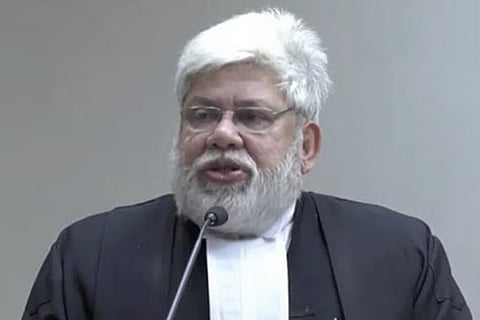

Chennai
For one, it was not a routine transfer. When the Chief Justice of a chartered High Court with a sanctioned strength of 75 judges is sent to one of the smallest High Courts that has all of three judges, including himself, it is seen as the equivalent of being shunted out. Justice Banerjee’s tenure here was extremely brief – the shortest in two decades – with an exception of the judges who were elevated to the Supreme Court. However, the 10 months that he served here were significant in the matters considered by the bench headed by him and the verdicts it pronounced, pulling up both the Union and State governments, and also constitutional authorities like the Election Commission of India.
The bar association protested the transfer, and advocates wrote to the Supreme Court Collegium seeking it to withdraw the recommendation. However, the Collegium went ahead with the process and the President issued the official order formalising the transfer. But the decision in itself raised several key questions about the Collegium’s system and its functioning.
This is not a singular instance of the Collegium’s functioning leading to criticisms about the process of appointing and transferring judges of constitutional courts. From former Chief Justice of Madras and Delhi High Courts, AP Shah, being denied elevation to the Supreme Court to Justice Akil Kureshi’s recent experience of being transferred from one High Court to another (which robbed him of the opportunity to become a Chief Justice) before finally being denied elevation to the apex court, there are one too many instances to ignore the criticisms. Interestingly, Justice Banerjee’s predecessor Justice Vijaya Tahilramani was also abruptly transferred to Meghalaya HC but chose to resign instead of assuming charge. When her transfer, much like Justice Banerjee’s case, was protested and questioned, the Collegium issued a rare response saying it would not be in the interest of the institution to reveal the reason and added it had no hesitation in disclosing it if necessary.
The Collegium system came into force in 1993 after what is known as the Second Judges Case, which was reinforced by the Third Judges Case in 1998. In ensuring the primacy of the Collegium, comprising the Chief Justice of India and four senior-most judges of the Supreme Court, in the appointment and transfer of judges, the effort was to insulate the judiciary from the executive. Despite misgivings from various quarters, the rationale does have its merits considering how they have to be impartial while adjudicating matters that almost always has the executive as a party to the case. But how the Collegium takes its decisions leaves much to be desired: no record is kept about its deliberations and the decisions are only conveyed in the form of tersely worded notifications, without any explanation about how it arrived at a particular decision.
The lesson here is that just like how nature abhors a vacuum, the absence of transparency would only lead to rumours, speculations and conspiracy theories filling the void. While transparency is a very important and precious facet in a functioning democracy, the issue that confronts us is not restricted to that; it is also one concerning a foundational idea of democracy: accountability to the people. As supreme as our apex court and its Collegium are, they still have an overlord – the people.
Visit news.dtnext.in to explore our interactive epaper!
Download the DT Next app for more exciting features!
Click here for iOS
Click here for Android